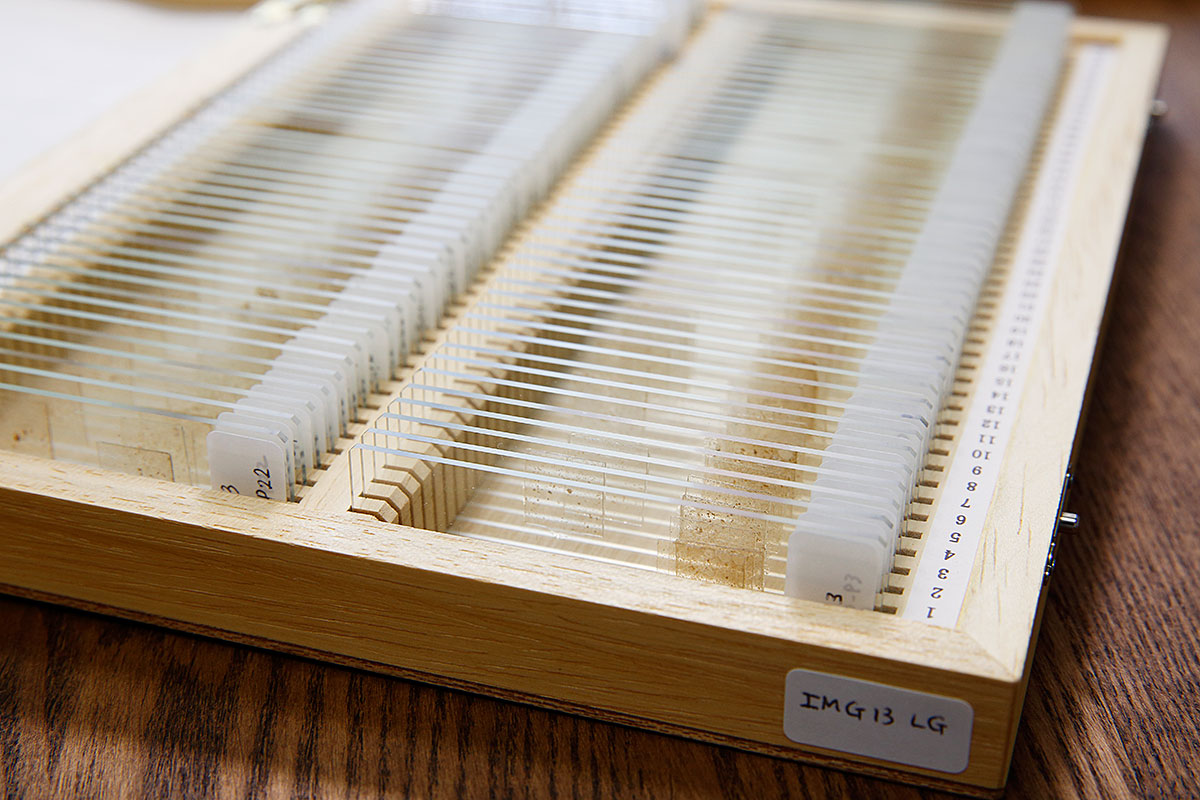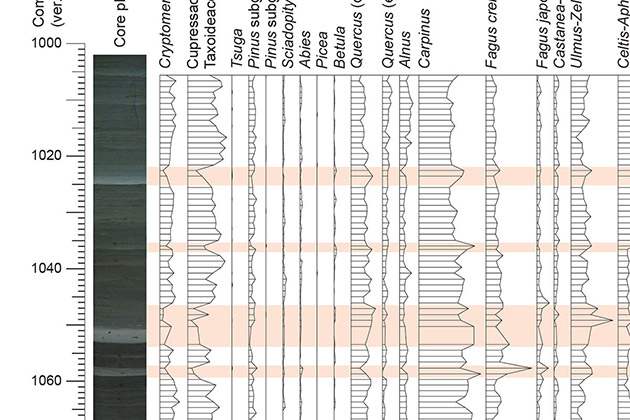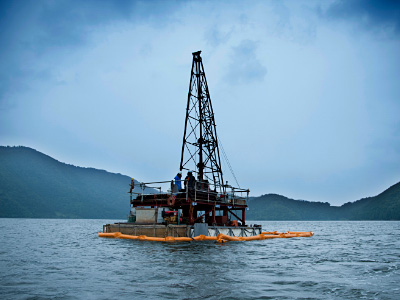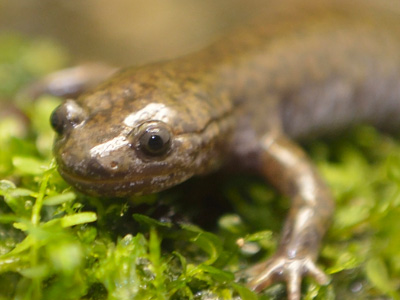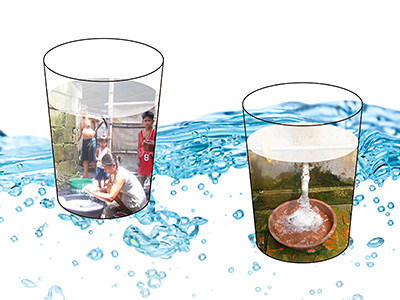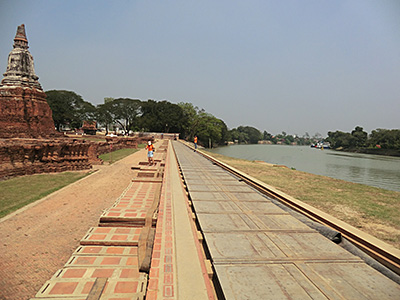STORY #1
Future natural disasters
can be seen in the varves
that have recorded
ancient history
Takeshi Nakagawa
Professor, Research Organization of Science and Technology,
Director of Research Centre for Palaeoclimatology
Ikuko Kitaba
Associate Professor, Research Organization of Science and Technology
- Japan
- Greenland
- Guatemala
Taken by Ayumu Muneno, courtesy of Tokyo Shoseki Co., Ltd.

It is interesting to reveal links between phenomena taking place far away in outer space and the earth's climate through varves.
The research techniques developed by Nakagawa and his team to collect, store and analyse varved sediments at extremely high precision was unprecedented. By utilising these techniques, other studies on varves are making considerable progress.
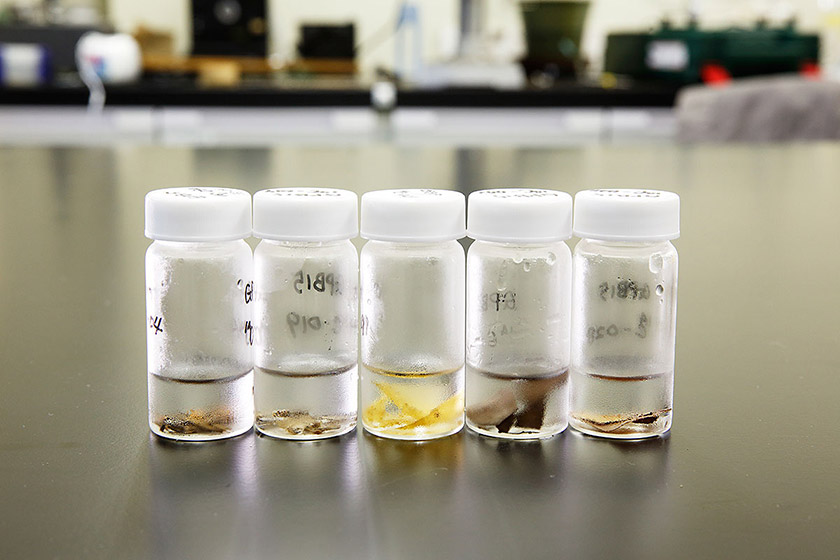
[Radioactive elements] Plants take in a radioactive isotope of carbon (14C) contained in the atmospheric carbon dioxide, and when they die, the amount of 14C contained in plant’s body starts decreasing. By measuring the amount of remaining 14C, the age of plant fossils can be determined.
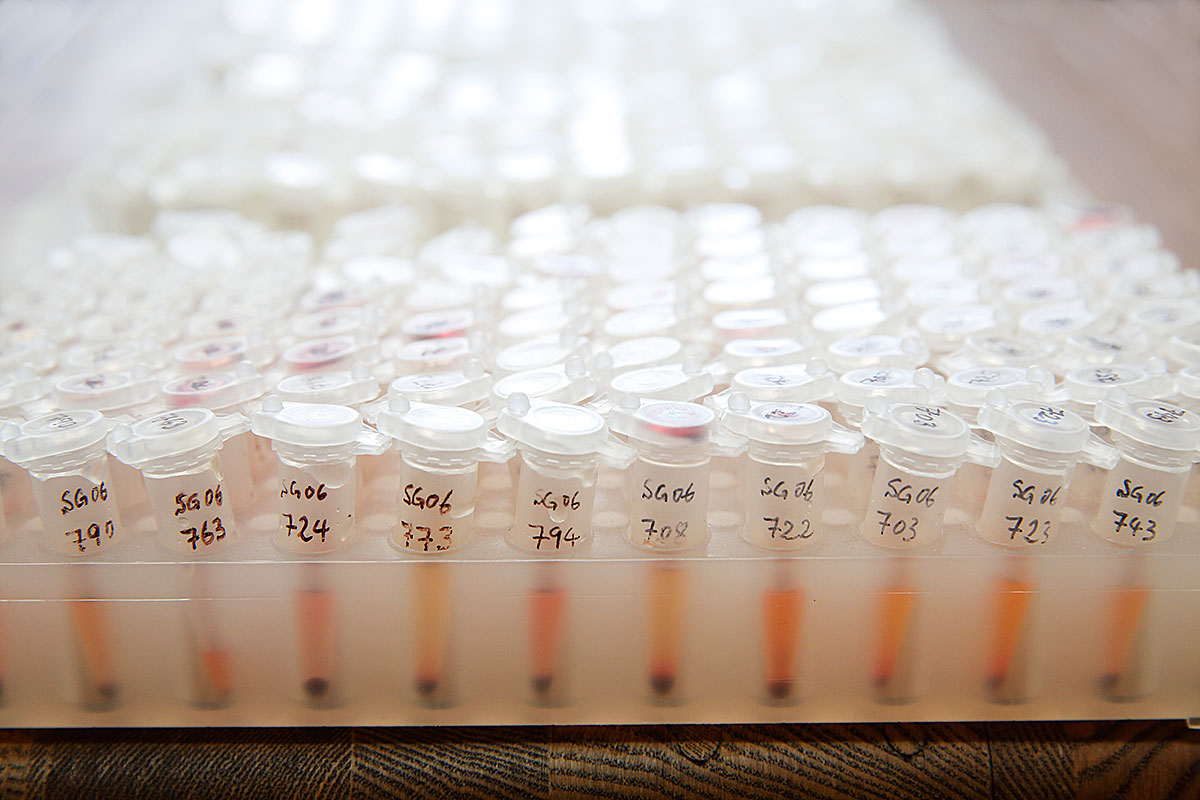
[Pollen] A graph (partial) showing the amounts of different types of pollen contained in individual varves. By checking the increase and decrease of the amounts of pollen, researchers can obtain data pertaining to temperature changes.
Varves are also considered to serve as a key to discovering the influence of processes in outer space on the changes in climate on the earth.
The possibility that radioactive rays with high levels of energy coming from outer space, or so-called galactic cosmic rays, could affect the earth's climate has often been a subject of discussion. By using changes of geomagnetic field over geological timescale as an experimental field, Ikuko Kitaba demonstrated their effect for the first time. Geomagnetic field, or the magnetism that the earth possesses, acts as a shield that protects the earth from the influence of cosmic rays. Analyzing pollen fossils, Kitaba found that the earth becomes colder when the geomagnetic field weakens once every several hundreds of thousands of years. The amount of cosmic rays that reach the earth has been affected by geomagnetic field, which in turn changes the amount of clouds, thereby impacting the climate.
Currently, Kitaba is trying to grasp smaller changes in geomagnetic field by using varves from Lake Suigetsu and Lake Ichi-no-megata in Akita Prefecture, Japan. "There are periods when geomagnetic field weakens in a short span of about a thousand years," Kitaba says. "My ultimate goal is to discover if the earth becomes colder even during such a short period of time."
From the past that has been asleep for tens of thousands of years at the bottom of lakes, as well as from phenomena that occurs in far outer space, these scientists took on the challenge of conducting large-scale research in order to help discover the future.

Ikuko Kitaba [Left]
Associate Professor, Research Organization of Science and Technology
Subject of Research: Investigating mechanisms linking outer space and the earth’s climate
Research Keywords :Palaeoclimatology, Cosmoclimatology
Takeshi Nakagawa [Right]
Professor, Research Organization of Science and Technology, Director of Research Centre for Palaeoclimatology
Subject of Research: Climate reconstruction using varved sediments
Research Keywords :Palaeoclimatology, Geochronology
